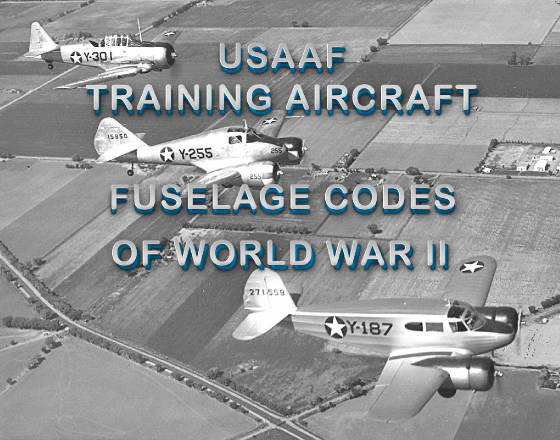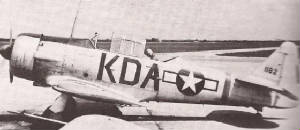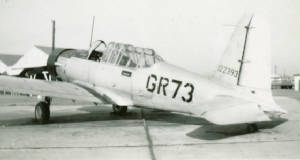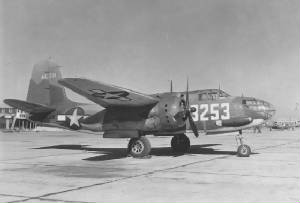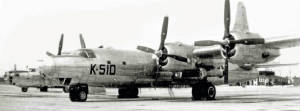|
|
HomeBasic Flying TrainingAdvanced Flying Training S-EAdvanced Flying Training 2-EBombardier-Navigator Flying TrainingTransition: S-ETransition: 2-ETransition: 4-EFlexible Gunnery SchoolsBritish Flying Training SchoolsAdvanced Glider TrainingMiscellaneous CodesMystery CodesAuxiliary AirfieldsTrainer SpecificationsApplicable LinksAcknowledgements and Sources
|
Introduction . I have attempted to structure the field letter codes used on USAAF WWII training aircraft into a meaningful format. As of this writing I have a 95% confidence level that the code data for basic and advanced flying training aircraft is complete. The data for fighter and multi-engine bomber trainers continues to be collected. I welcome all information as there are no doubt omissions and revisions to be made. Contact the webmaster with your input…Please! So much of the input to this site has been made by contributing sources such as yourselves. I am continually updating the presented information...new and revised images, new and revised data. Researching this information and organizing it into a meaningful format has been a most challenging task. Actually, I have spent years collecting this information and have obtained my information from books, magazines, Internet, libraries, photographs, e-mails and interviews with some very helpful people. Any complete list formally documented by the USAAF has certainly been lost to time.The only formal USAAF documentation ever found on the subject was a letter written 20 May 1942 which specified the field letter codes for 15 AAF's within the Southeast AAF Training Center centered at Hq. Maxwell Field, Ala. Intereslingly, the actual title or name for the letter ID has never been located. I have seen a number of terms used by different authors such as: Field ID, Code Letter, Buzz Number, Fuselage Code, Station ID, et.al. So until formal documented title can be verified the expression of "Field Letter Code" will be used in this document. The locally assigned number displayed on the fuselage is identified as the "Field Number" in T.O. No. 07-1-1 para.7 d. (5.) dated June 15, 1943.
A. Flying Training Commands
Western Flying Training Command (WFTC) (Hq: Santa Ana, California) - Every base in this command had a single letter chosen for each field all of which were Prefixed and displayed a hyphen between the field code letter and the number. Example: K- 201 for Stockton AAF, E-175 for Merced AAF. The WFTC had 10 Basic, 5 Adv S-E and 11 Adv 2-E bases under its command. Geography for the WFTC were states west of the Texas border.
Central Flying Training Command (CFTC) (Hq: Randolph Field, Texas)- The use of field letter codes was not universal in this command. Consequently, in the tables that follow the expression of 'NLA', is used meaning No Letter Assigned. Interestingly a number of Suffix codes were used in this command (e.g.234E) . The The CFTC had 11 Basic, 10 Adv S-E and 9 Adv 2-E schools under its command. Geography for the CFTC was Texas and states immediatly to the north.
Eastern Flying Training Command (EFTC) (Hq: Maxwell Field. Alabama) - Every base in this command had a letter assigned for each field all of which were Prefixes and did not display a hyphen between the field code and the number. . A number of bases used a double letter for their field code (e.g."NE 211".) The EFTC had 15 Basic, 9 Adv S-E, and 10 Adv 2-E schools under its command. Geography for the EFTC was primarily southern states all east of Texas. Note: The EFTC was formerly known as the "Southeast AAF Training Center".
British Flying Training Schools (BFTS) Although not part of the USAAF Flying Training Organization program they are included here as the BFTS graduated 551 USAAF Cadets. The British had seven flying training locations in the USA which were run by the RAF. Interstingly all three levels of flying training were performed at every base. There was quite a variety of letter codes used at these bases ( i.e.single, double and triple letters) and needless to say a 'jumble' of letters could be found at a given base. Geographical locations for the BFTS's were California, Arizona, Oklahoma, Texas and Florida. As a point of interest it was the RAF that deemed that the Vultee Valiant was a 'useless' aircraft and much to the chagrin of the USAAF they dropped it from the BFTS program. The USAAF,as well as the USN,eventaully dropped the type from the flight training programs as well.
B. Letter Code Formats
Primary Training Aircraft
Convention was that primary training aircraft would not display a field letter code and carry only numerics on the fuselage body. Typically, this numeric (1-999) was to be positioned on the fuselage aft of the rear cockpit. The addition or sole use of the aircraft serial number on the fuselage was not uncommon. Further, the US insignia was to be displayed only on wing positions. To date I have documented two AAF's and one primary school that did indeed display a field letter code on their aircraft as follows: Mather Field (CA) displayed the letter "I" on PT-22's and Randolph Field PT-19's were marked with the letter "H". The Spartan Aircraft Co., Tulsa, OK (a contract primary school) had at least one PT-19 with a field letter code of "R". Interestingly, all seven British Flying Training Schools (BFTS) operated their primary aircraft with fuselage letter codes. Both PT-17 and PT-19 aircraft were utilized and supporting photographs are included in that subsection.
Basic and Advanced Training Aircraft
The US insignia was to be displayed on the wing with optional display on the fuselage. The fuselage would display the s/n or a sequential number assigned by the base (1-999) and in most cases an alpha character identifying the assigned base in one of the following formats: Prefix, Suffix or Infix. These alpha characters represented a specific base and were informally known as Field Codes and are NOT to be confused with the post WWII expression of Buzz Codes.
Prefix: An alpha letter such as "T" or sometimes a double letter such as "SP" was applied to the aft fuselage along with a locally assigned sequential numeric. Typically, these alpha characters were a letter (s ) chosen either from the name of the AAF or from the name of a nearby community. So in the case of "T" which was the field code for Mather Field (CA) the letter 'T' was chosen from one of the letters in the name of the base. This term was then followed by locally assigned numeric hence "T-300, 301, 302...". Other examples: Kirtland AAF chose "Q" which was selected from the community of Albuquerque and Luke Field used "X" which was the last letter of Phoenix. It has also been noted in a few very rare cases that the aircraft ID was followed a letter notation instead of numerics and was hyphenated (e.g. N- A, P-A...etc.).
There was still another prefix format that was occasionally used on 2-E bomber training aircraft such as "F T4" utilized on Florence AAF A-26's. The 'F' indicated the base assigment, "T" stood for training group and "4' was the aircraft number in the training group. Siimilar notation as "B H3" is noted on some Barksdale aircraft. This format appears to be unique to just a few AAFs and seemingly to the 1944-45 period. Suffix: This system
of letter and numbers was simply reversed from the Prefix method above. The sequential number would be followed
by the field code (e.g. 234 N) as used by Blackland AAF on their AT-17 aircraft. Infix:
This system placed the field code 'sandwiched' between two numerics. An
example would be "3A90 " with the "A" representing Big Spring AAF, TX as usd on their. AT-11 trainers.
To date I have not found any formal documentation on the interpretation of this format. I am "guessing' that
the '3' was a sub-training group number and the '90' was the local assigned aircraft number. Other: The Riddle
School of Aviation (Florida) was a contract school that performed Advanced S-E (AT-6) and used alpha letters sequenced
together instead of numerics. For example "AA, AB, AC,...AZ", " BA, BB, BC..etc". Both US and RAF cadets trained there as well. Field Letter Code Size & Positioning: To date the only formal documentation has been found that defines the physical size of the letter code nomenclature is that of T.O. No. 07-1-1 para 7. d (5), dated 15 June 1943. It states that " the field number displayed shall be 75% of the fuselage height between the wing trailing edge and the leading edge of horizontal stabilizer." As one reviews the photos in the following pages it will be noted that there are a great variety of sizes and placement of these markings (See Exhibits 1, 2 and 3 at bottom of this page)..
C. Transition Training
Fighter Aircraft Training was the final phase following advanced where pilots were introduced to higher performance aircraft for the first time. The fighter aircraft utilized were P-36, P-39, P-40, et.al. and the field letter codes assigned were single letters such as A, B, C, D, V, etc. with frequent redundancy among the bases. How these code letters were chosen and allocated is unknown but I have documented what I have found for historical purposes. Twin Engine Bomber Training typically utilized the B-25, B-26, B-34, A-20 and A-26 aircraft all displaying quite a variety of letter and number code formats. Generally speaking the majority of these aircraft carried the field letter code on the nose and sometimes repeated on the tail. Prefih, Infix and Suffix markings have been noted. It has been noted that the very few AAF's that performed A-20 Havoc training utililized ex-RAF aircraft . These aircraft were characterized by displaying a large four character number on the nose ( See Exhibit 4 below). Four Engine Bomber Training aircraft displayed a variety of field letter code formats and many times reflecting the first two letters of the name of the base.For instance both B-17 and B-29 aircraft would place these two letters on the very tip of the vertical stabilizer (e.g.'PY' for Pyote AAF, TX , "DY' for Dyersberg, TN, 'FA' for Fairmont AAF, NE.(.See Exhibit 5 below). In the case of the B-24 and B-32 aircraft the letters were applied in fairily large fonts on the forward fuselage (e.g.''OM" for Ft. Worth AAF,TX, "ON" for Liberal AAF,KS. These letters were rarely meaningful (See Exhibit 6 below).
D. All-Through Schools (A-TS)
Typically, when a cadet completed a specific phase of flying training (e.g. primary) he would be transferred to another base for basic and still another base for advanced. There were instances, although rare, where all three levels of flying training were completed on the same base. Known instances of the A-TS bases are as follows:
There were other instances where two phases of flying training were combined (e.g. basic and advanced) but then not necessarily for all classes at a given base. Some examples of combined basic-advance are listed below:
All constructive input is welcomed! Contact me: webmaster@fuselagecodes.com Rev: 0/4/02/2025 JDV |
